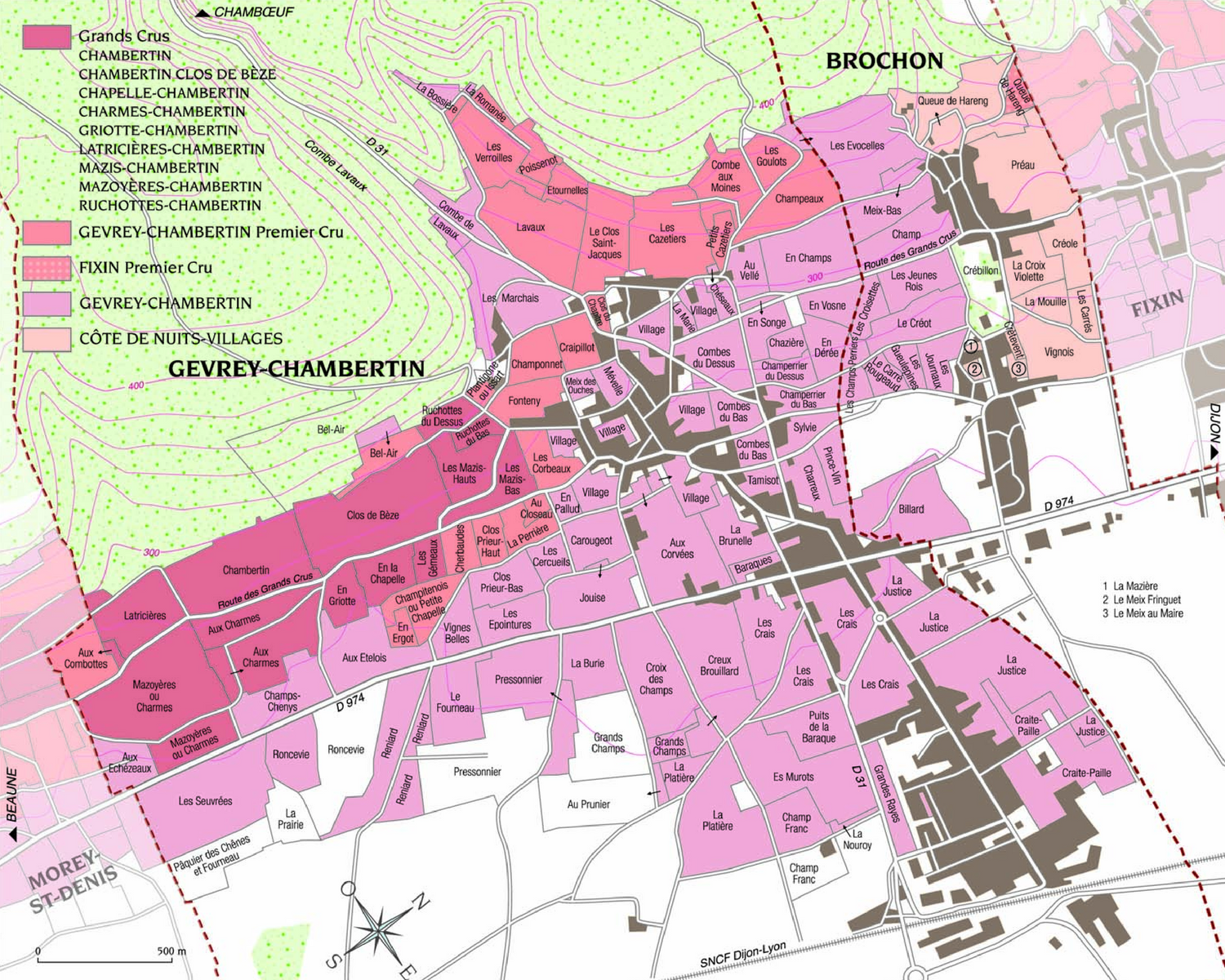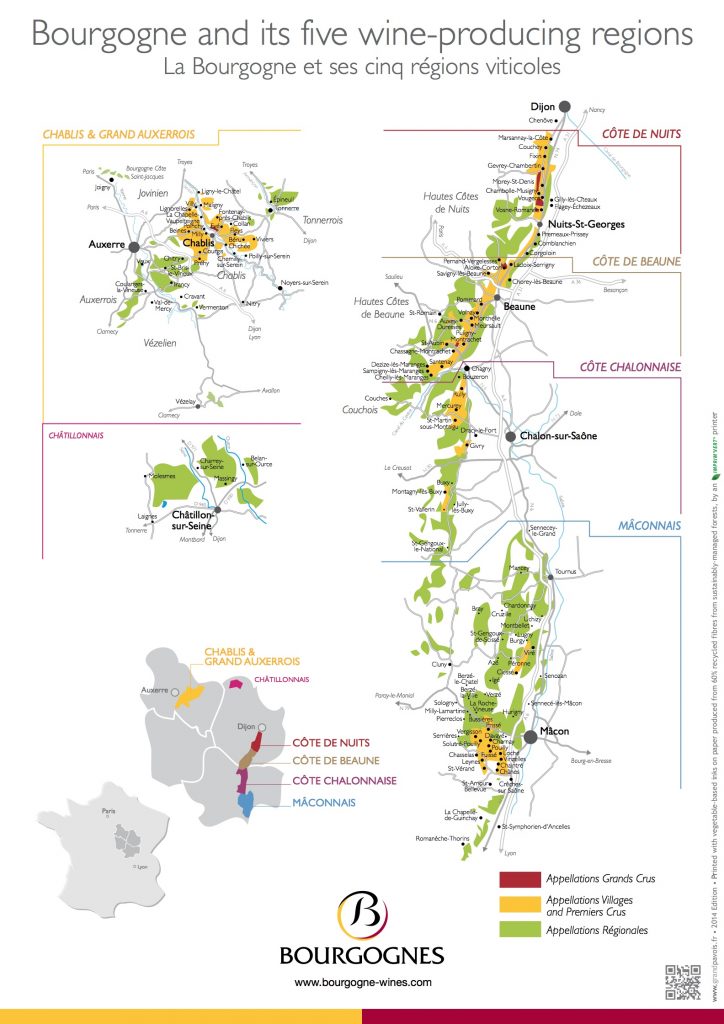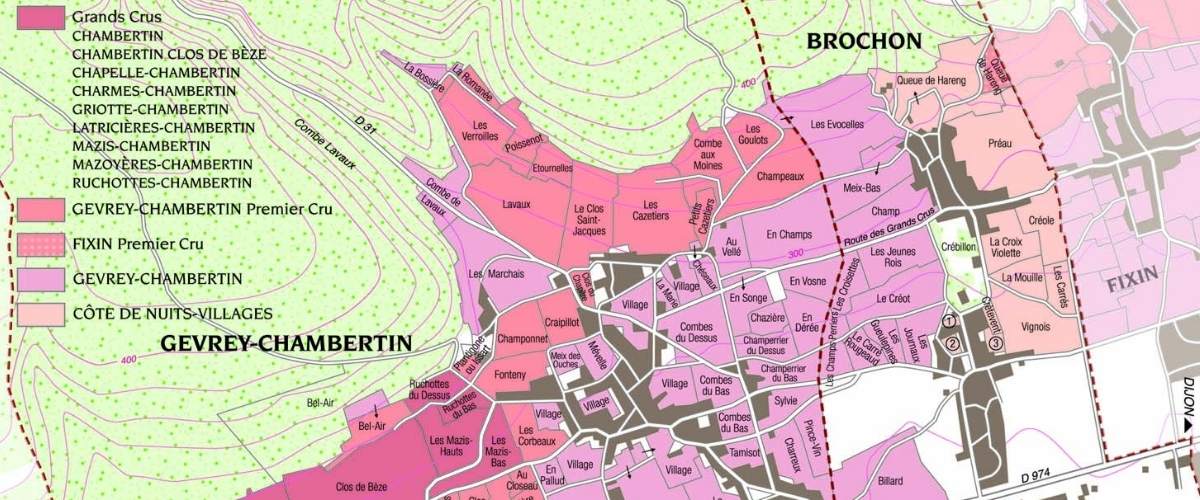Today we turn to the great village and sub-region of Gevery-Chambertin.
In this series, we’re covering as many of the main villages of Burgundy, home to some of the world’s greatest Pinot Noir and Chardonnay.
Make sure you join our community to get the latest articles from the Wine Bites Mag as they come out. You’ll find all of our Burgundy related articles here.
There’s a quick refresher on the regions of Burgundy at the end of this post to help you place yourself within Burgundy and France as a whole.
See all of our wines from Gevrey-Chambertin
The Villages of Gevrey-Chambertin
When asked to describe the appellation, Nicolas Rossignol, of Domaine Rossignol-Trapet, summarised Gevrey-Chambertin in three words: Prestige, Pinot Noir and Power.
Gevrey-Chambertin lies 15km south of Dijon in the Côte de Nuits. The region takes its name from the village, Gevrey, and the appellation’s most prestigious vineyard, Le Chambertin. This village-vineyard naming convention is commonplace today, however, Gevrey-Chambertin set the trend, officially linking the two in 1847.
Covering approximately 550 hectares, it is one of the largest appellations in the Côte d’Or and certainly the largest appellations for reds; Pinot Noir is the only variety planted in Gevrey-Chambertin. Due to its size, the sub-region has a variety of terroirs – from gravels in the Vau de Combe to rich clay-soils on the norther côte – and produces a diversity of styles. Traditional viticultral and winemaking predominate, however, there has been growing trend towards more organic practices over the past two decades.
Gevrey-Chambertin has earned a reputation for producing Pinot Noirs with rich fruit and structured tannins. The best expressions see this intensity tempered with elegance, yielding concentrated wines with complexity and finesse. Watch Jean-Pierre Renard’s video below for an in-depth look at the geography, geology and climatic conditions of Gevrey-Chambertin.
Learn more about the Gevrey-Chambertin Appellation from the winemakers themselves! The one with Charles Rousseau is in French.
In the video below we explored the 3 adjacent villages Chambolle-Musigny, Morey-Saint-Denis & Gevrey-Chambertin tasting through wines from each Village.
UPDATE December 2017: The Charmes-Chambertin tasted in the video has started to settle and my initial concerns around ripeness are well and truly a distant memory! Unfortunately, it’s all sold out!
Detailed Map of Gevrey-Chambertin
Click on to enlarge 🔎

The Regions of Burgundy
The best bit of Burgundy is a thin strip running from North to South around 50km in length, to the South East of Paris
It’s split into three main regions, within each of these regions there are villages which have specific single vineyards planted in them to the varieties red varieties: Pinot Noir and Gamay, and the white varieties: Chardonnay and Aligoté, a lesser variety that produces some fun wines at more affordable prices.
The three main regions in the strip South of Dijon are:
- Côte D’Or – meaning the Golden Slope, derived from it’s original name, Côte d’Orient, East Slope, within which rest:
- Côte-de-Nuits – South of the city of Dijon and North of the town of Beaune famous for it’s Pinot Noir. The best known villages are: Gevrey-Chambertin, Morey-St-Denis, Chambolle-Musigny, Nuits-St-Georges and Vosne-Romanée. 5% of Burgundy production including Chablis.
- Côte-du-Beaune – The area around and South of Beaune famous for Chardonnay including the 5 Grand Cru vineyards and many very good Pinot producing vineyards. The best known villages are: Puligny-Montrachet, Chassagne-Montrachet, Mersault, Volnay, Pommard and Saint Aubin. 10% of production including Chablis.
- Côte-Chalonaise – Mixing more affordable Chardonnay and Pinot that can be of excellent quality. The villages of Rully, Mercurey and Givry producing their best wines.
- Mâconnaise – The least regarded of the main regions, still capable of producing some very good wines. Becoming a shining light for value with the ever increasing prices of Burgundy.
In addition to these, the two regions of Beaujolais, mostly producing Gamay, (at the South end of the Dijon Strip) and Chablis, mostly producing Chardonnay (between the southern part of Champagne and Dijon) are part of the Bourgogne wine region.


You must be logged in to post a comment.